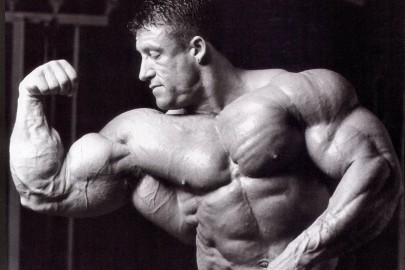Machines are already better than humans at chess, and now computers are increasingly important in sports like cricket and baseball. Author Jon Hotten ponders the implications…
Writing about the 1986 world championship match between Garry Kasparov and Anatoly Karpov, Martin Amis said of chess: ‘[They are playing] the foremost game of pure skill yet devised by the human mind, a game that is in fact beyond the scope of the human mind, well beyond it, an unmasterable game’.
Eleven years later, Kasparov was defeated by a computer called Deep Blue. The match and its aftermath were conducted in an atmosphere of paranoia and intrigue, of fear and loathing. Kasparov claimed to have detected a ‘deep intelligence and creativity’ in the machine, his suggestion being that there had been some human intervention in its play. By 2006, a software programme called Deep Fritz was beating another world champ, Vladimir Kramnik, and now the various machines even play each other and gain their own rankings.
Ultimately, the machines beat the humans through sheer grunt: they could calculate more outcomes more quickly. They never got tired or paranoid, they didn’t suffer from the anxiety that Kasparov felt while representing the entire human race against them. The only achievement ahead of the machines is whether they can actually ‘solve’ chess; that is, calculate the perfect outcome of any game from any position.
There is no element of ‘chaos’ in chess: there are no bad bounces or freak weather, the board and the pieces don’t change. Its variables are perhaps finite. It might be a leap to suggest that sport is as vulnerable to computing power as a game, but there is no doubt that it will shape its future.
Some sports will be more resistant to numbers than others. Football generates a haze of meaningless TV stats because it exists in chaos, statistically speaking. It’s a fluid, random game that lacks the rigidity to support really conclusive analysis. Gridiron exists towards the other end of the ‘scale’ in that it’s quite rigorously positioned and patterned.
Michael Lewis, who wrote Moneyball, the book that represents a kind of year zero moment for modern sporting stattos, also wrote about Gridiron. Blindside was in part the story of the importance of a certain extremely rare physique playing in a particular position. Here, where biomechanics meet statistics, are the threads of cricket’s future.
At Loughborough University, where the England and Wales Cricket Board has its Performance Centre, almost every ball bowled in any form of international cricket is logged, its outcome added to an already vast database. It becomes a kind of anatomical chart of everyone playing the game. Broad and specific patterns in each format emerge, and from those come not just tactics, but the types of player needed to implement them.
You could call this the ‘known half’ of stats research, in that it’s open to anyone with the resources to do it. It’s also in its way unmediated and random. It’s produced by a wide base of playing skills, from guys that grew up playing tape-ball to players coached systematically from their early teens.
The other half, lesser known, comes where biomechanics meets with statistical analysis. England’s coaching teams believe that they have identified five common factors that all international fast bowlers have, and similarly, five possessed by all top-level spinners. There is specific work on six hitting, on revolutions on the ball in spin bowling and lots more.
This work creates paradigms into which suitable players are fitted and then driven up the elite coaching ‘pathways’ devised to produce players for the England team. There’s some brilliant and revelatory work going on, but it is in a way reminiscent of the way that Deep Blue began to ‘solve’ chess. It strips away mystery, and to a degree individuality.
England are a very good side, but they did not come up with reverse swing, they have never produced a mystery spinner. Their two really innovative players, Kevin Pietersen and Eoin Morgan, come from outside of their systems. What they do very well is refine technique in a ruthless way to produce the fine margins needed to win at the highest level. ‘Executing their skills’ as they call it. As such, they are already becoming the product of the research work done.
Martin Amis thought chess was an unmasterable game, but the machines are proving him wrong. Cricket, with all of its variations and oddities, its geographical sweep, its luck and its superstitions, its weather and its deadly psychology, actually might be. But some of its deeper mysteries are being revealed, and new kinds of machines are emerging to play it.












terrific article Jon, and very sobering!! My fave part – “They never got tired or paranoid, they didn’t suffer from the anxiety that Kasparov felt while representing the entire human race against them.” The point about anxiety and general human fallibility is so true
I’m sure you’re right, Jon; statisticians will play an increasingly large part in the preparation of the England team. You can hear them in the pre-Test meetings with players: “Listen carefully, Stuart, I will say this once for information, twice for reinforcement, three times if I notice you’ve glazed over, and four times if my algorithm develops a wobble. Stats tell us that Chris Gayle walks out to bat at 0.3 mph, indicative of what we call partial somnolence or early onset insouciance. This condition leaves him vulnerable to the first nineteen balls he faces. In his last twenty innings, he’s attempted a hoick to leg off balls 3, 7 and 13, driven hopelessly at balls 2, 8 and 16, and fallen on his arse attempting a Dilshan scoop off balls 17 and 19. This, therefore, is what we stattos call the Golden Time. You will bowl off a 21.4 yard run, the ball will leave your hand at 83.25 mph, reducing to 41.2 mph by the time it reaches Gale; the ball will pitch three inches short of a good length and 0.8 inches outside the off stump; your demeanor throughout will be studied and unanxious, your smile will be three inches from side to side; we’re not interested in the vertical. You must succeed in this statistically verifiable window because from ball 20 he’ll smash the crap out of you.”